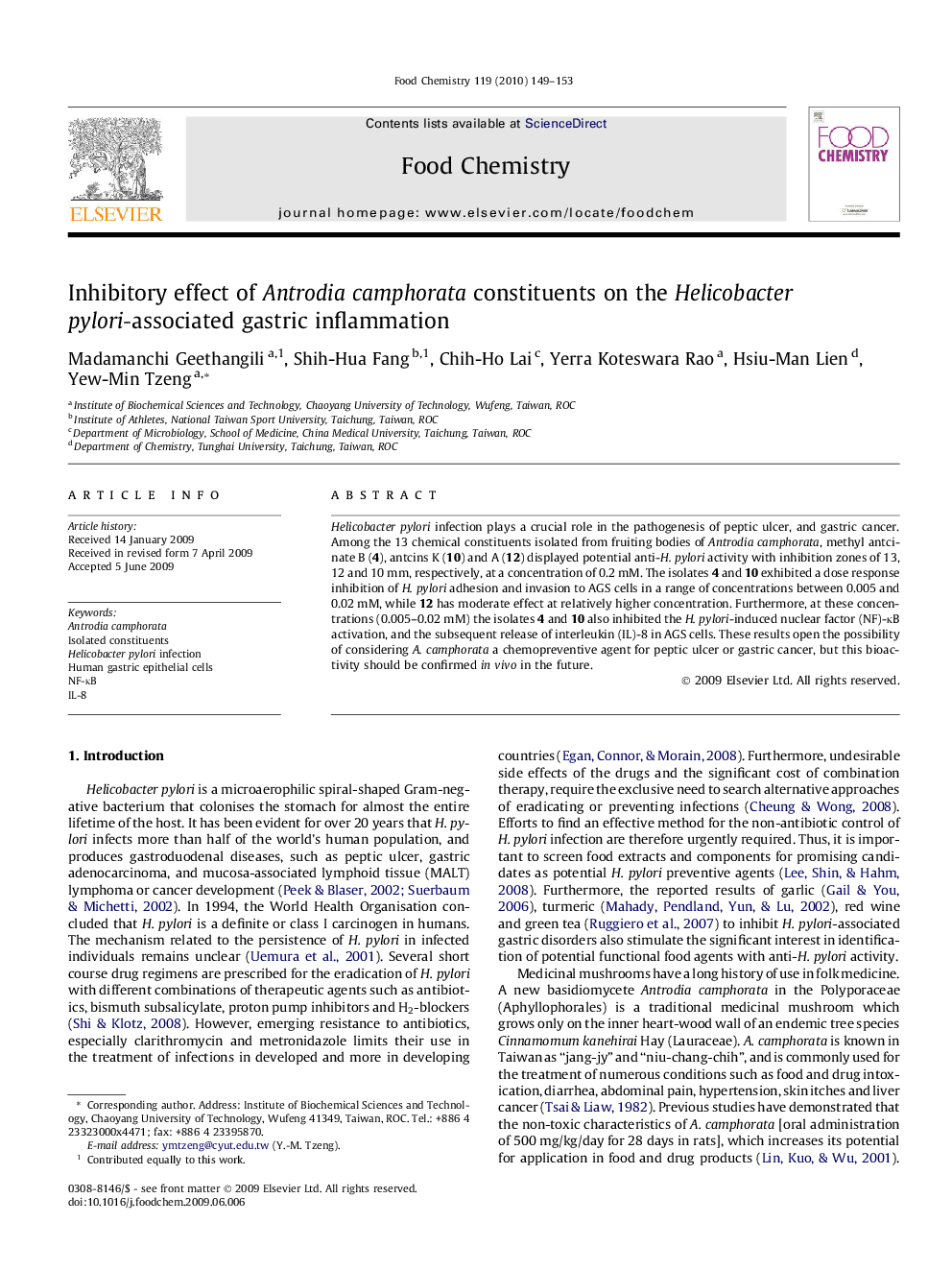| Article ID | Journal | Published Year | Pages | File Type |
|---|---|---|---|---|
| 1186764 | Food Chemistry | 2010 | 5 Pages |
Helicobacter pylori infection plays a crucial role in the pathogenesis of peptic ulcer, and gastric cancer. Among the 13 chemical constituents isolated from fruiting bodies of Antrodia camphorata, methyl antcinate B (4), antcins K (10) and A (12) displayed potential anti-H. pylori activity with inhibition zones of 13, 12 and 10 mm, respectively, at a concentration of 0.2 mM. The isolates 4 and 10 exhibited a dose response inhibition of H. pylori adhesion and invasion to AGS cells in a range of concentrations between 0.005 and 0.02 mM, while 12 has moderate effect at relatively higher concentration. Furthermore, at these concentrations (0.005–0.02 mM) the isolates 4 and 10 also inhibited the H. pylori-induced nuclear factor (NF)-кB activation, and the subsequent release of interleukin (IL)-8 in AGS cells. These results open the possibility of considering A. camphorata a chemopreventive agent for peptic ulcer or gastric cancer, but this bioactivity should be confirmed in vivo in the future.
